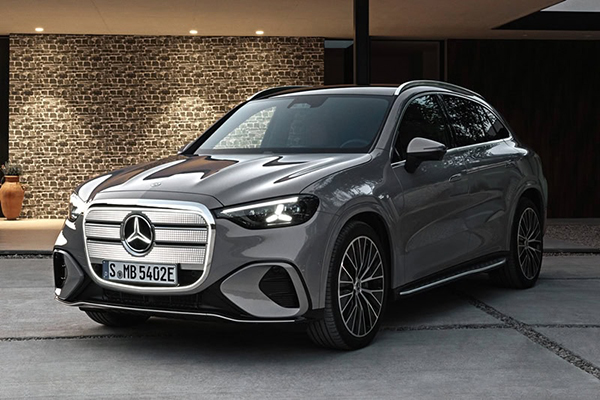The launch of the much more modern Mercedes GLC EV poses a threat to the current Mercedes EQE SUV, as their size and powertrain options are quite similar.

Launched at the end of 2022, the Mercedes EQE SUV was part of Mercedes’ flagship lineup intended to tackle the luxury electric vehicle segment. However, very high prices, 400V technology only, and an aerodynamic shape that compromises rear access without providing the desired efficiency have pushed customers away.
Now, the Mercedes EQE SUV also faces internal competition from the new Mercedes GLC EV – officially named the Mercedes GLC with EQ Technology.
Similar Dimensions
While there’s a clear size difference between the combustion-engine Mercedes GLC and GLE (the GLE is 225 mm longer and has a 47 mm longer wheelbase), the Mercedes GLC EV and EQE SUV are almost identical in dimensions.
At 4845 mm, the Mercedes GLC EV is only 18 mm shorter than the EQE SUV, and its wheelbase is 58 mm shorter. On top of that, the GLC EV offers a larger trunk – 570 liters compared to only 520 liters in the EQE SUV – and includes a front trunk (frunk) with 100 liters of storage space, which the EQE SUV does not have.
Mercedes GLC EV: Lower Consumption, Greater Range
Both models have similar battery capacities – 96 kWh net for the Mercedes EQE SUV (after the latest update) and 94 kWh net for the GLC EV.
Despite its aerodynamic design, the Mercedes EQE 500 4Matic SUV (dual motor, 408 PS) has a minimum consumption of 18.9 kWh/100 km. By comparison, the Mercedes GLC 400 4Matic, with two motors and 489 PS, has a minimum consumption of only 14.9 kWh/100 km, making it over 20% more efficient than the EQE SUV.
As a result, the Mercedes GLC EV promises a range of up to 713 km, compared to just 604 km for the EQE SUV, despite the EQE having 81 PS less power.
Although they have similar battery capacities, the EQE 500 4Matic SUV is extremely heavy at 2,535 kg, which impacts both efficiency and driving dynamics. Mercedes has not announced the weight of the GLC EV, but it’s expected to be lighter – for example, the BMW iX3, which has a much larger 108 kWh battery, weighs only 2,360 kg.

Mercedes GLC EV: Faster Charging
Thanks to the 800V technology on the new MB.EA platform, the Mercedes GLC EV supports charging speeds up to 330 kW, requiring just 22 minutes to charge from 10% to 80%. Additionally, the GLC EV supports bidirectional charging, which the EQE SUV does not offer.
In comparison, the Mercedes EQE 500 4Matic SUV supports a maximum of 173 kW charging and needs 30 minutes to charge from 10% to 80%.
Price
Prices for the Mercedes GLC EV haven’t been officially announced yet, but it’s certain that the GLC EV will be significantly cheaper, considering the EQE 500 4Matic SUV starts at a steep €99,841.
Its main competitor, the new BMW iX3, starts at €68,900 for the iX3 xDrive50 version with dual motors and 469 PS. To remain competitive, the GLC EV’s base version – Mercedes GLC 400 4Matic – is expected to be priced between €70,000–€75,000, making it about €25,000 cheaper than the EQE 500 4Matic SUV.
That’s why we believe the Mercedes GLC EV will accelerate the end of the Mercedes EQE SUV.
What’s Next for Other Models?
The Mercedes EQE sedan will likely meet the same fate in 2027. It will face two major internal rivals: the new Mercedes C-Class EV, launching in 2026 on the same MB.EA platform as the GLC EV, and the new Mercedes E-Class EV, set to debut in 2027.
What About the EQS and EQS SUV?
Demand for luxury EVs is declining globally, especially in China, where there’s a broader downturn in luxury product demand. Mercedes will have to decide whether it’s worth continuing to invest in a new generation of luxury EVs.
If the company does go ahead, the future EQS models will need to offer significantly greater range and faster charging than the upcoming C-Class EV and E-Class EV – a challenge that won’t be easy to overcome.
Mercedes GLC EV Accelerates The End Of The EQE SUV
30/09/2025
No Comments
Mercedes-Benz | Mercedes-AMG
Click to rate this post
[Total: 1 Average: 5]